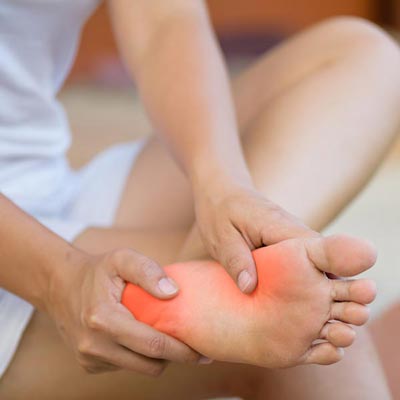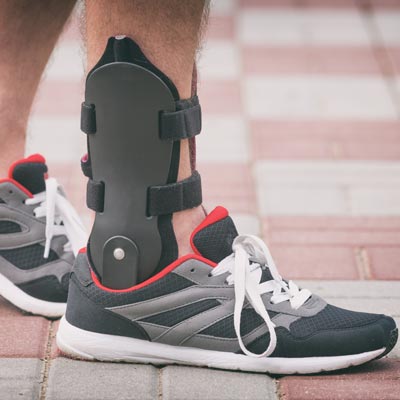The Top 6 Most Common Foot Bone Injuries and How to Deal with Them
Foot bone injuries can be a major inconvenience, causing discomfort and hindering our daily activities. Whether you’re an athlete or someone who spends most of their day on their feet, foot-bone injuries can affect anyone at any time. The complexity of the foot’s structure makes it vulnerable to various types of injuries, from stress fractures to broken bones. As avid supporters of healthy living and injury prevention, we’ve researched and compiled a list of the top 6 most common foot bone injuries and how you can effectively deal with them. So if you’re in the market for information on foot bone injuries, you’ve come to the right place! Join us as we dive into this informative blog post on preventing and dealing with these pesky injuries that are all too common among individuals like yourself.
An Introduction to Foot Bone Injuries
Before we get into the specifics of each foot bone injury, let’s take a quick look at the anatomy of the foot. The human foot is made up of 26 bones, all working together to provide stability and mobility. These bones are divided into three sections: the hindfoot (heel and ankle), midfoot, and forefoot (toes and metatarsals). Each bone plays a crucial role in supporting the body’s weight, absorbing shock during movement, and aiding in balance and stability.
Now that we have a basic understanding of the foot’s structure, let’s explore some of the most common foot bone injuries and how they occur.

Foot Bone Injuries
Understanding the Anatomy of the Foot
The human foot is an intricate structure made up of 26 bones, 33 joints, and more than 100 muscles, tendons, and ligaments. Understanding the anatomy of the foot is essential to maintaining good overall health. Our feet serve as the foundation for everything we do, from walking and running to jumping and dancing. Each part of the foot has a critical role to play in the proper functioning of our body. For instance, the arches in our feet act like shock absorbers, while the large muscles in our calves and legs help to move and support the foot. Moreover, the toes in our feet have unique roles in maintaining balance and agility. By understanding the anatomy of the foot, we can identify potential problems, such as flat feet or plantar fasciitis, and take measures to keep our feet healthy and pain-free. As such, knowledge of the anatomy of the foot is crucial not only for athletes and fitness enthusiasts but for individuals of all walks of life, keen on leading an active and fulfilling life.
The Most Common Types of Foot Bone Injuries:
Now that we have a basic understanding of the foot’s structure, let’s explore some of the most common foot bone injuries and how they occur.
- Stress Fractures: Stress fractures are tiny cracks in the bones caused by repetitive stress and overuse. They are most common in athletes who engage in high-impact activities like running or jumping, but can also occur in individuals who suddenly increase their physical activity levels.
- Ankle Sprains: Ankle sprains occur when the ligaments that connect the bones of the ankle stretch or tear. They can happen during physical activities, such as sports, or even from something as simple as stepping on an uneven surface.
- Plantar Fasciitis: This condition is caused by inflammation of the plantar fascia, a thick band of tissue that runs along the bottom of the foot from the heel to the toes. It is a common injury among runners and individuals who spend long hours on their feet.
- Metatarsal Stress Fractures: Similar to stress fractures, metatarsal stress fractures occur in the bones of the midfoot due to repetitive stress and overuse. They are common among athletes, especially those who play sports that involve running and jumping.
- Achilles Tendonitis: This injury is characterized by the inflammation of the Achilles tendon, which connects the calf muscles to the heel bone. It is a common injury in runners and can also occur due to sudden increases in physical activity levels.
- Turf Toe: This injury occurs when there is a sprain or tear in the ligaments surrounding the big toe joint. It is common among athletes who play on artificial turf surfaces and is caused by the toe repeatedly pushing off from a hard surface.
How to Deal with Foot Bone Injuries:
Dealing with foot-bone injuries can be frustrating, but there are certain steps you can take to alleviate pain and aid in the healing process. Here are some tips for dealing with common foot bone injuries:
- Rest: The first and most important step in dealing with a foot bone injury is to rest. Avoid putting weight on the injured foot for at least 24 hours to allow it to heal.
- Ice: Applying ice to the injured area can help reduce swelling and pain. Make sure to use an ice pack or wrap the ice in a towel before applying it directly to the skin.
- Compression: Wrapping the injured foot with a compression bandage can help reduce swelling and provide support.
- Elevation: Elevating the injured foot by propping it up on a pillow can also help reduce swelling and pain.
- Physical Therapy: For more severe injuries, your doctor may recommend physical therapy to strengthen the muscles and improve mobility in the affected area.
- Proper Footwear: Wearing proper supportive and cushioned footwear can help prevent foot bone injuries by providing adequate support and shock absorption during physical activities.
By following these tips, you can effectively deal with foot-bone injuries and prevent them from reoccurring in the future. Remember to always listen to your body and seek medical attention if pain persists or worsens.

Supportive Foot Ware for Ankle Instability
Tips for Preventing Foot Bone Injuries
While some foot-bone injuries may be unavoidable, there are steps you can take to minimize your chances of developing one. Here are some tips for preventing foot bone injuries:
- Warm-Up and Stretch: Before engaging in physical activity, make sure to properly warm-up and stretch your feet and legs. This will help to loosen up the muscles and prevent strain or injury.
- Increase Intensity Gradually: When starting a new exercise or physical activity, it’s important to start slow and gradually increase intensity and duration to avoid overuse injuries.
- Wear Proper Footwear: As mentioned earlier, wearing proper supportive and cushioned footwear is crucial in preventing foot-bone injuries.
- Cross-Train: Engaging in a variety of activities can help prevent overuse injuries by giving certain muscle groups a break while others are being used.
- Listen to Your Body: If you experience any pain or discomfort during physical activity, it’s essential to listen to your body and take a break if needed. Pushing through pain can lead to more severe injuries.
By following these tips and taking care of our feet, we can prevent foot-bone injuries and continue to lead an active and fulfilling life. Remember, our feet are the foundation of our body, so it’s essential to keep them healthy and strong. So, let’s lace up those shoes, stretch those muscles, and go explore the world on our two amazing feet!
In conclusion, understanding the anatomy of the foot is crucial in preventing and dealing with common foot-bone injuries. By taking care of our feet and listening to our bodies, we can continue to live an active and pain-free lifestyle. Remember to always seek medical attention if necessary and never ignore persistent or worsening pain in your feet. Let’s keep our feet healthy and happy for a lifetime of adventures!
Flagstaff Foot Doctors: Anthony Rosales DPM
https://www.google.com/maps?cid=8835841318590452161
421 N Humphreys St, Flagstaff, AZ 86001, United States
(928) 774-4825
https://flagstafffootandankle.com/
